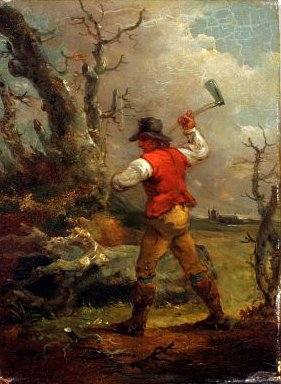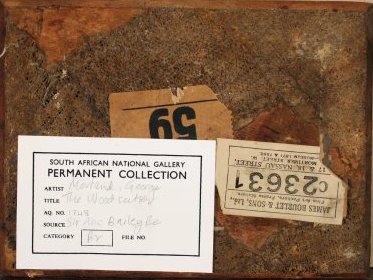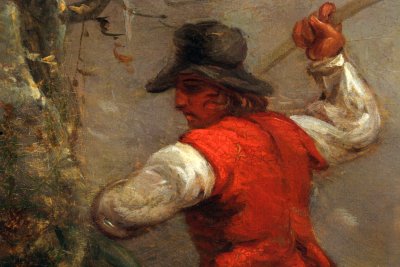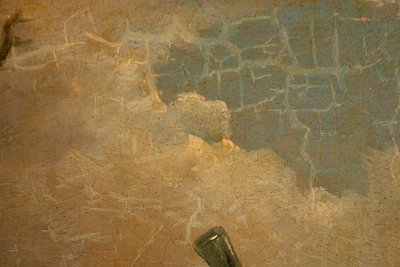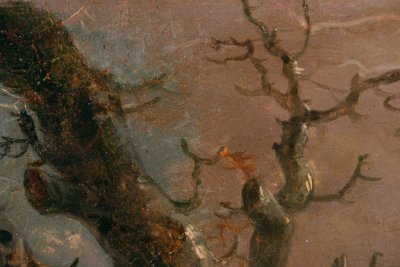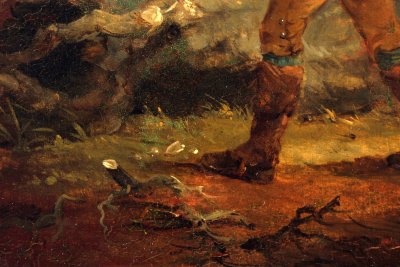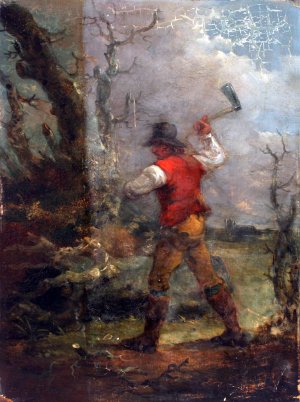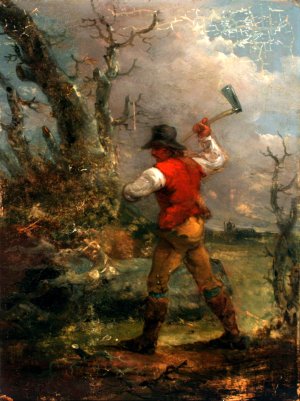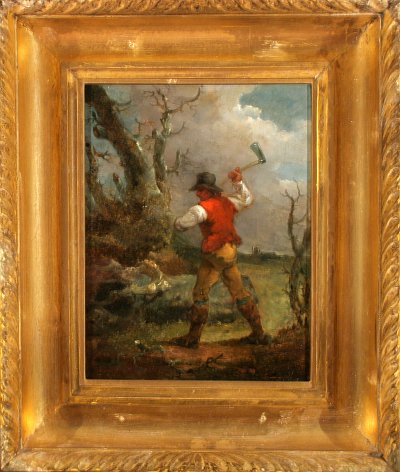TITLE:
The Woodcutter
TECHNIQUE: Oil on canvas
SIGNATURE: Not present
DIMENSIONS: 222 x 167 mm
FRAME: Wooden, gesso moulded, gilded gold
TREATMENT: October β December 2006
CONDITION REPORT
PRIMARY SUPPORT
The primary support is a 13mm thick wooden panel, possibly oak. The edges have been bevelled and a thick oven weave canvas has been adhered to the back in diagonals, both of which suggest previous conservation treatment.
Two labels can be seen on the back which has both been adhered diagonally. The labels read:
βJames Bourlet & Sons, Ltd.,
Fine Art Packers, Frame Maker
C 23631
17 & 18, Nassau Street,
Mortimer Street, W.
β¦β¦.;- Museum 1817 & 7588β
The second label reads:
β59β
Both labels are in black ink on paper pulp paper.
GROUND
The ground is just less than a mm thick, is cream in colour and is possibly gesso. The condition is good except losses on three corners (top right and bottom two corners).
PAINT LAYER
The paint has been applied thinly in glazes with only a few areas of impasto in the highlights of the landscape below the tree. The artist has used extensive medium in the paint which has resulted in drying cracks developing in the sky, landscape and figure. A smaller drying crack pattern that looks similar to varnish crazing or craquelure, can be seen between the wider cracks. Thick discoloured over-paint can be seen particularly clearly over the drying cracks in the sky area.
VARNISH LAYER
The natural resin varnish layer is discoloured and a layer of surface dirt covers this. This is not the original varnish as the painting has been previously restored.
TREATMENT CARRIED OUT
- Photographic record was taken and this was maintained throughout treatment.
- Tests were carried out to remove the surface dirt and this was removed using the appropriately selected reagent.
- Following tests including a safety margin-cleaning test, an organic solvent was selected to remove the discoloured varnish layer safely and effectively. Cleaning proceeded using a swab stick. Due to the medium in the paint, it was necessary to only thin the varnish in the darker areas.
- An isolating brush conservation varnish was applied. Localized losses in the areas of the drying cracks were retouching and a final varnish applied.
- The frame, both front and back were cleaned, small losses filled and coloured and the painting was secured using brass plates.
